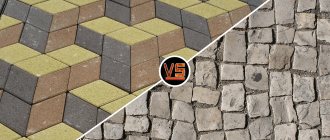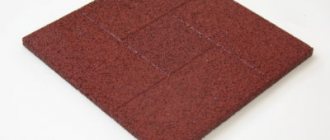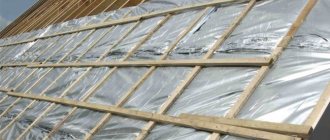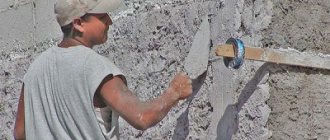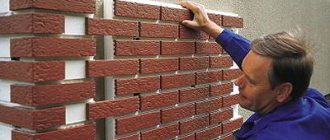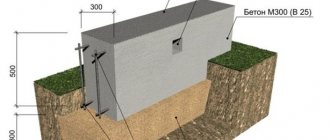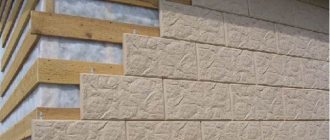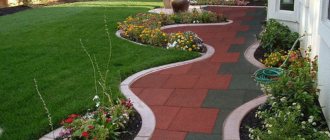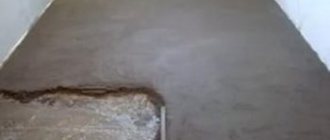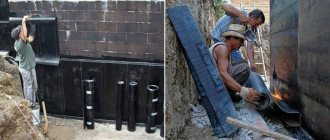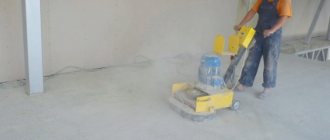To prove their effectiveness, new building materials must pass the test of time, which will definitely tell you whether to believe advertising from manufacturers. Polymer sand paving slabs have been successfully used only in the CIS countries since the late nineties and early 2000s - coupled with foreign experience in its use, this is quite a sufficient period of time to form an opinion about the product.
Product properties
New technologies for the production of polymer-based tiles make it possible to create a strong and reliable material used in construction work. Polymer sand paving slabs have a huge number of advantages over other types of products, for example, cement or compressed ones. Most customers choose this particular material, the cost and level of properties of which corresponds to the cost of the products.
When manufacturing polymer sand tiles, experts adhere to certain technical characteristics that would make the product durable and resistant to temperature changes. This material has a long service life, which determines the advantage of the building material over other types of products, for example, tiles made of cement.
The main feature of the tiles is the fact that when laying polymer-sand tiles, cement dust does not arise. In addition, the product has plasticity characteristics, which avoids cracking and damage to the building material during installation work. The product is easy to take care of, as it is easy to wash and does not absorb water, which increases the shelf life of the material. The water resistance of the tiles allows you to withstand sudden changes in temperature, especially in winter.
According to their shape, the tiles have different patterns and colors. Despite the huge size of the polymer-sand tiles, the product is light in weight and is ideal for laying on a cement base or for a used roof. Under such criteria, the product is placed on special supporting parts. If the material is used for laying the roof, it is recommended to lay the tiles on a waterproofing layer on top of supports or crushed stone. Such tiles can be used as cladding for the basement of a house or used for laying borders.
Durability and favorable delivery
Polymer sand material can last more than 100 years. At the same time, for 150 years it will not lose its color saturation, and the design will not be erased. Such high qualities are ensured by technology for coloring the product to its full depth. Even prolonged exposure to ultraviolet radiation cannot have any detrimental effect on the shade.
Due to the fact that such tiles are lightweight, the cost of transportation is noticeably reduced. When compared with different concrete products, polymer-sand ones will fit an order of magnitude larger in volume into one conventional container.
Development of production of polymer sand tiles
The product manufacturing process has a certain technology, during which it is necessary to adhere to the correct ratio of components. The composition of the tile is determined by the following materials:
- Sand, the particle size of which should be no more than three mm;
- Dyes that determine the color of the product;
- Primary crushed polymers are almost always used, but secondary ones can be used to save money;
The more important and main component is sand, the component part of which makes up 70 5 percent of the total mass of the solution. Before use, it is recommended to wash and sift it. Later, the sand is dumped into certain ovens, in which it is heated at enormous temperatures.
The cost of polymer-sand paving slabs is determined by production technologies, which have a certain sequence:
1. First, the raw materials used must be crushed or agglomerated. If polymer chips are used, this process is skipped.
2. Later, it is important to mix sand, crumbs, and dyes and additives.
3. The prepared mixture must be melted into raw materials at a temperature of two hundred and 50 degrees.
4. Then, the solution must be pressed and finished slabs formed.
5. Lastly, the products are packaged and sent to stores.
During the production process, special equipment is used, which provides an automatic tile production system. This allows you to make a strong and reliable product that has a long service life.
Characteristics, composition and manufacture
Sand-polymer tiles are manufactured using a specific technology that allows the finished product to demonstrate stable properties, regardless of the place and period of use. Its operation is possible at temperatures from -70 to 100 °C. Polymer tiles are lighter than their concrete counterparts, their shapes and colors are more varied, and the surface has greater abrasion resistance, and therefore durability.
Polymer sand wear-resistant paving slabs consist almost entirely of ordinary sand, the amount of which is 75% of the total volume of the original material. The rest is binding polymers that determine the plastic properties of the product, thanks to which the tile material does not crumble and can withstand about 500-700 freezing cycles. The plasticity of sand-polymer tiles does not allow the formation of microcracks on its surface, due to which concrete and asphalt are destroyed over time. Water gets into the cracks and freezes and expands them; after defrosting, the moisture penetrates deeper and ultimately destroys the surface.
The polymer mass used for production is chemically neutral - under certain conditions it can only be exposed to concentrated nitric acid. Polymer chips or recycled materials are used to produce tiles. In the second case, the polymer crumbles as finely as possible - sometimes even ground into dust - this is necessary for more thorough mixing of the components.
Sand used is of medium fraction – 3 mm. Before adding to the main mixture, it is dried and sifted so that the moisture content is no more than 10% and there are no foreign inclusions. Metal oxides are added as coloring pigments:
- Titanium dioxide is white.
- Iron oxide – brown, red and orange shades.
- Chromium oxide gives a green color.
All components are mixed in a mixer and fed into an extruder - an oven in which the entire mass is heated at a temperature of 180-250 ° C. Then it goes into a molding press, where the sand-polymer tile takes on the desired shape. The last stage is cooling, during which polymerization of the slabs occurs - now they are completely ready.
Advantages of polymer sand tiles
Polymer sand tiles can be used in various types of landscaping of a summer cottage or urban area. In almost all cases, the product is used for laying pedestrian areas, various sites, cafes, shopping pavilions and other premises. Polymer sand tiles are more resistant to wear, unlike asphalt or cement pavement. In general, the product has a huge number of advantages, which are determined by the following parameters:
1. Long shelf life of the product. Almost always, the average lifespan of tiles can be at least 30 years.
2. The product has the characteristics of water absorption and frost resistance. If the building material absorbs water, then as a result of temperature changes small cracks will form, which will contribute to the deformation of the tiles. The features of the polymer-sand product make it possible to avoid similar destruction, since the percentage of water absorption is about 0.03.
3. Strength and ductility of polymer sand tiles, a photo of which is presented on this website. Such building material does not crack or chip, which reduces the amount of waste during installation of the product, its transportation and operation. A similar product is difficult to divide into a pair of parts, which has a higher resistance to wear.
4. The tiles are lightweight, which makes them easy and convenient to transport and install. It can be used for installation on the roof or in the interfloor covering.
5. It has low thermal conductivity characteristics, which does not keep snow and ice on the surface of the product.
6. This tile is made of materials that do not create a sliding area.
7. Polymer sand tiles are acid and oil resistant. As is already clear, a popular material is a polymer that has resistant characteristics to the environment, chemicals and other substances. There is a low risk of mold, mildew or alkali in this product.
8. Manufacturability parameter. Laying polymer-sand paving slabs can be done in different variations. When doing the work yourself, the development of the laying is done manually, and professionals have a special slab-laying machine. The presence of other devices in the work allows you to quickly process tile elements, namely, cut, drill or mill the product and the like.
9. Polymer sand tiles are an environmentally friendly material. For example, when exposed to high temperatures, asphalt pavement begins to release carcinogenic substances that harm the outdoor environment. This tile can only create cement dust. At high temperatures, the product does not overheat and does not soften, which allows the initial characteristics of the product to be preserved. Thus, the tiles do not harm various plants, seedlings, and human health.
10. The tile has the highest wear resistance. There is no dust generated during installation work, which determines the long shelf life of the product.
11. A similar product is easy to repair. Polymer sandstone tiles can be temporarily dismantled for laying various communications.
12. The product has a beautiful and neat appearance, which is determined by the wide range of colors of the material. Over time, the color of the tile does not disappear, and the product itself has different shapes and geometry, which allows you to create different options for paths and site designs even later.
Advantages and disadvantages
It should be said that polymer sand paving slabs have many advantages.
It differs from other road surfaces:
- high strength and wear resistance;
- low level of abrasion;
- absolute moisture resistance (liquid does not penetrate into the product, but collects on its surface in the form of drops);
- oil and petrol resistance;
- resistance to low temperatures (up to –70 degrees there are no changes in the structure of the product);
- resistance to aggressive chemical environments;
- ease of installation;
- light weight;
- variety of textures and colors;
- exceptional durability.
If we talk about the disadvantages of polymer sand tiles, there is only one: under the influence of high temperature, the product increases slightly in volume.
Therefore, when installing this coating, leave a gap of 3 mm.
Tile implementations
Almost always, the product is widely popular among builders, owners of suburban houses, and owners of summer cottages. The scope of implementation and implementation of the material is determined by established categories:
1. Laying polymer-sand paving slabs, a video of which can be seen at the end of the article, is carried out in the local area. Areas near gazebos or swimming pools, garden paths and the like can be used as design objects.
2. The tiles will amazingly complement the landscape design, and various flower and plant compositions in the area near the house.
3. The slab is quite often installed at 100, car washes and gas stations.
4. The product is used to create ground coverings for shopping centers, parks, and children's playgrounds.
Professional advice on choosing paving slabs
Construction stores offer a wide selection of polymer sand tiles, the choice of which corresponds to certain characteristics:
1. Additives of dyes. The color and the amount of added dyes determine the properties and characteristics of the product. For example, the introduction of German dyes will ensure a long shelf life of the product, while Chinese dyes will lose their color over time under the influence of ultraviolet rays.
2. Uniform color of the tiles. Uneven coloring of the surface of the product indicates that bad substances were used during the work process. This may apply to the highlights of production technologies and to the coloring of tiles.
3. Other inclusions on the surface of the tile may indicate the introduction of low-quality components during the production process. For example, snow-white stains may indicate non-compliance with a certain temperature for the production of the material. Such a product may not have durable qualities.
Development of laying polymer-sand paving slabs
Almost always, the process of installing tiles must be started by creating a sand cushion with crushed stone or laying it on a cement base. The choice of installation method should be determined by the type of soil and the purpose of the future area. For example, installing tiles on a sand base will be great for garden paths, walkways, and the like. If the site has unbalanced soil, it is necessary to use the technology of laying on crushed stone, which is recommended for use for parking lots. The installation process on concrete is done for heavy vehicles.
For installation you will need to prepare certain materials:
1. A mixture of sand and cement, the ratio of which should be 1:4.
2. To lay tiles on a cement base, you need to prepare a special glue or concrete solution.
3. For unbalanced soil, it is recommended to use a layer of crushed stone.
The development of styling has the following sequence:
The work site must be prepared by first leveling the surface and compacting the soil. Later, a layer of crushed stone is laid, the thickness of which should be 15-20 cm. Then sand is dumped two cm wide, which will help level the existing layer. Later, pour in the main amount of sand, the layer thickness of which should be about 6 cm. Using a special hammer, you can begin laying the tiles. The gaps between the elements should be about four mm. Any gaps present must be filled with sand.
Tile
63 votes
+
Vote for!
—
Vote against!
Polymer sand tiles are a new building material that has recently been offered on the domestic market. Such a product has many advantages, as proven by Western experts. In this article we will look at the characteristics, features of the selection and installation of polymer sand tiles.
Table of contents:
- Product characteristics
- Polymer sand tile production technology
- Advantages of polymer sand tiles
- Applications of tiles
- Recommendations from experts on choosing paving slabs
- Technology for laying polymer-sand paving slabs
- How to lay polymer sand tiles on a cement-sand mixture
- Recommendations from installation experts
Product characteristics
Modern technologies for the production of polymer-based tiles make it possible to create a durable and reliable material used in construction. Polymer sand paving slabs have many advantages over other types of products, for example, concrete or pressed ones. Most buyers choose this particular material, the price and quality of which corresponds to the price of the products.
When manufacturing polymer sand tiles, specialists adhere to certain technical parameters that would create high-strength and resistant properties of the product to temperature changes. This material has a long service life, which determines the advantage of the building material over other types of products, in particular, tiles made of cement.
The main characteristic of the tile is the fact that when laying polymer sand tiles, cement dust does not appear. Also, the product has plasticity properties, which avoids cracking and damage to the building material during installation work. The product is easy to care for, because it is easy to clean and does not absorb water, which increases the shelf life of the material. The water resistance of the tiles allows you to withstand sudden changes in temperature, especially in winter.
The shape of the tiles has different patterns and shades. Despite the significant size of polymer sand tiles, the product is light in weight and is also excellent for laying on a concrete base or for an existing roof. In this case, the product is placed on special supporting parts. If the material is used for roofing, it is recommended to lay the tiles on a waterproofing layer on top of supports or crushed stone. Such tiles can be used as cladding for the basement of a house or used for laying borders.
Polymer sand tile production technology
The manufacturing process of a product has a certain technology, during which it is necessary to adhere to the correct ratio of components. The composition of the tile is determined by the following materials:
- sand, the particle size of which should be no more than 3 mm;
- dyes that determine the shade of the product;
- Primary crushed polymers, as a rule, are used, but secondary ones can be used to save money;
The most important and main component is sand, the component part of which makes up 75 percent of the total mass of the solution. Before use, it is recommended to wash and sift it. Next, the sand is poured into certain ovens, in which it is heated at high temperatures.
The price of polymer-sand paving slabs is determined by production technologies, which have a certain sequence:
1. First of all, the raw materials used must be crushed or agglomerated. If polymer chips are used, this process is skipped.
2. Next, it is important to mix sand, crumbs, as well as dyes and additives.
3. The prepared mixture must be melted into raw materials at a temperature of 250 degrees.
4. After this, the solution must be pressed and finished slabs formed.
5. Lastly, the products are packaged and sent to hardware stores.
During the production process, special equipment is used, which provides an automated tile production system. This allows you to create a durable and reliable product that has a long service life.
Advantages of polymer sand tiles
Polymer sand tiles can be used in various types of landscaping of a summer cottage or urban area. In many cases, the product is used for laying pedestrian areas, various sites, cafes, shopping pavilions and other premises. Polymer sand tiles are more resistant to wear, unlike asphalt or concrete pavement. In general, the product has many advantages, which are determined by the following parameters:
1. Long shelf life of the product. Typically, the average lifespan of tiles can be at least 30 years.
2. The product has water absorption and frost resistance properties. If the building material absorbs water, then as a result of temperature changes, small cracks will form, which will contribute to the deformation of the tiles. The features of the polymer sand product make it possible to avoid such destruction, since the percentage of water absorption is about 0.03.
3. Strength and ductility of polymer sand tiles, a photo of which is presented on this website. Such building material does not crack or chip, which reduces the amount of waste during installation of the product, its transportation and operation. Such a product is difficult to divide into several parts, which is highly resistant to wear.
4. The tiles are lightweight, which makes them easy and practical to transport and install. It can be used for installation on the roof or between floors.
5. Has low thermal conductivity, which does not retain snow and ice on the surface of the product.
6. This tile is made of materials that do not create a sliding area.
7. Polymer sand tiles are acid and oil resistant. As is already known, a popular material is a polymer, which has resistant properties to the external environment, as well as to chemicals and other substances. In such a product there is a minimal risk of fungus, mold or alkali.
8. Manufacturability parameter. Laying polymer sand paving slabs can be done in different ways. When doing the work yourself, the laying technology is done manually, and specialists have a special slab-laying machine. The presence of other devices in the work allows you to quickly process tile elements, namely cut, drill or mill the product, etc.
9. Polymer sand tiles are an environmentally friendly material. For example, when exposed to high temperatures, asphalt pavement begins to release carcinogenic substances that harm the external environment. This tile can only generate cement dust. The product does not overheat or soften at high temperatures, which allows you to preserve the original properties of the product. Thus, the tiles do not harm various plants, seedlings, or human health.
10. The tile is highly resistant to wear. During installation work, no dust appears, which determines the long shelf life of the product.
11. Such a product is easy to repair. Polymer sandstone tiles can be temporarily dismantled for laying various communications.
12. The product has a beautiful and aesthetic appearance, which is determined by the wide range of colors of the material. Over time, the shade of the tile is not lost, and the product itself has different shapes and geometry, which allows you to create different variations of paths, design of areas, and so on.
Applications of tiles
As a rule, the product is widely popular among builders, owners of country houses, owners of summer cottages, and so on. The scope of use and application of the material is determined by established categories:
1. Laying polymer-sand paving slabs, a video of which can be seen at the end of the article, is carried out in the local area. Areas near gazebos or swimming pools, as well as garden paths and the like can be used as design objects.
2. The tiles will perfectly complement the landscape design, as well as various flower and plant compositions in the area near the house.
3. The slab is often installed at service stations, car washes and gas stations.
4. The product is used for ground covering of shopping centers, parks, playgrounds and so on.
Recommendations from experts on choosing paving slabs
Construction stores offer a wide selection of polymer sand tiles, the choice of which corresponds to certain parameters:
1. Additives of dyes. The shade and amount of added dyes determine the characteristics and properties of the product. For example, the use of German dyes will ensure a long shelf life of the product, while Chinese dyes will lose their color over time under the influence of ultraviolet rays.
2. Uniform coloring of the tiles. Inhomogeneous coloring of the surface of the product indicates that low-quality substances were used in the work process. This may also apply to the peculiarities of production technologies and to the coloring of tiles.
3. Other inclusions on the surface of the tile may indicate the use of low-quality components during the production process. For example, white stains may indicate non-compliance with a certain material manufacturing temperature. Such a product may not have high strength properties.
Technology for laying polymer-sand paving slabs
As a rule, the process of installing tiles must begin with creating a sand cushion with crushed stone or laying it on a concrete base. The choice of installation method should be determined by the type of soil and the purpose of the future area. For example, installing tiles on a sandy base is perfect for garden paths, walkways, and the like. If the site has unstable soil, it is necessary to use the technology of laying on crushed stone, which is recommended for use for car parks. The installation process on concrete is done for heavy vehicles.
For installation you will need to prepare certain materials:
1. A mixture of sand and cement, the ratio of which should be 1:4.
2. To lay tiles on a concrete base, you need to prepare a special glue or concrete solution.
3. For unstable soil, it is recommended to use a layer of crushed stone.
The laying technology has the following sequence:
- The work site must be prepared by first leveling the surface and compacting the soil.
- Next, lay a layer of crushed stone, the thickness of which should be 15-20 cm.
- After this, pour sand 2 cm thick, which will level the previous layer.
- Next, pour in the main amount of sand, the layer thickness of which should be about 6 cm.
- Using a special hammer, you can begin laying the tiles. The gaps between the elements should be about 4 mm.
- Any gaps present must be filled with sand.
How to lay polymer sand tiles on a cement-sand mixture
1. First, a site is prepared, which is recommended to be leveled, and then the soil is compacted.
2. After this, lay a dense layer of crushed stone of 15-20 cm.
3. Next, pour sand to level the surface to 2 cm, after which a solid layer of 3-4 cm is poured.
4. Reinforcing mesh is placed on top of the sand.
5. Next, a layer of dry mixture of sand and cement is poured.
6. Using a rubber hammer, lay the tiles.
7. All gaps between the tiles must be filled with a mixture of sand and concrete.
The method of laying tiles on a concrete base has the following sequence of work:
- It is necessary to create a layer of crushed stone 15-20 mm thick.
- After this, a concrete screed of 5 or 10 cm is applied.
- The tiles should be laid on a layer of concrete mortar, the mixing of the components should be 1:3. An alternative would be to install it with tile adhesive.
- It is important to secure all seams with a cement-sand mixture.
Recommendations from installation experts
The peculiarities of laying tiles lie in the usual technology for installing traditional paving stones and other types of products. As a rule, the choice of installation method should be determined by the type of soil and certain operating conditions of the material. Experts advise adhering to the following requirements when laying polymer-sand paving slabs, which can be purchased at any hardware store:
- Installation of tiles must be carried out in dry weather.
- It is not recommended to sprinkle products with sawdust.
- The approximate gaps between the tiles should be about 5-7 mm.
- It is necessary to calculate the drainage of residual water from the surface of the tile.
To lay tiles, it is necessary to prepare a flat surface, the base of which should be a cushion of sand and crushed stone or cement. If there is an increased load on the tiles, the base should be carefully strengthened, and a water drainage system should be equipped. The technology for carrying out the work is not complicated, but requires some care.
How to lay polymer sand tiles on a cement-sand mixture
1. First, prepare a site, which is recommended to be leveled, and then compact the soil.
2. Then, lay a dense layer of crushed stone of 15-20 cm.
3. Later, sand is dumped to level the surface to a depth of two cm, after which a solid layer of 3-4 cm is poured.
4. Reinforcement mesh is placed on top of the sand.
5. Later, a layer of dry consistency of sand and cement is poured.
6. Using a rubber hammer, proceed to lay the tiles.
7. All gaps between the tiles must be filled with a mixture of sand and concrete.
The method of laying tiles on a cement base has the following sequence of work:
It is necessary to make a layer of crushed stone 15-20 mm wide. Then, a cement screed of 5 or 10 cm is used. The tiles are laid on a layer of cement mortar, the mixing of the components should be 1:3. A candidate could be laying with tile adhesive. It is important to secure all seams with a cement-sand consistency.
Professional styling tips
The peculiarities of laying tiles lie in the usual technology for installing traditional paving stones and other types of products. Almost always, the choice of installation method should be determined by the type of soil and certain criteria for the operation of the material. Experts advise adhering to the following requirements when laying polymer-sand paving slabs, which can be purchased at any hardware store:
Installation of tiles must be done in dry weather. It is not recommended to sprinkle products with sawdust. The approximate gaps between the tiles should be about 5-7 mm. It is necessary to calculate the drainage of residual water from the surface of the tile.
To lay tiles, you need to prepare a flat surface, the base of which should be a cushion of sand and crushed stone or cement. If there is an increased load on the tiles, carefully strengthen the base and equip it with a water drainage system. Planning the work is not difficult, but requires some vigilance.
